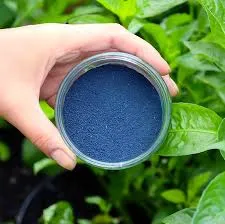indigo material
Exploring the Depths of Indigo A Journey through History, Culture, and Material
Indigo, a deep blue dye derived from the leaves of the indigo plant, has captivated societies across the globe for centuries. Its vibrant hue and the processes of its extraction and application have interwoven it into the fabric of various cultures, symbolizing both wealth and artistry. This article delves into the historical significance, cultural implications, and material properties of indigo, highlighting its enduring legacy.
Exploring the Depths of Indigo A Journey through History, Culture, and Material
Culturally, indigo has served as a symbol of status and identity. In West Africa, for example, indigo dyeing is often associated with the craftsmanship of the Yoruba and other ethnic groups. Here, textiles dyed with indigo carry profound meanings often linked with community identity, rituals, and celebrations. Similarly, in Japan, the technique known as Shibori, a form of resist dyeing that uses indigo, has roots in ancient traditions and remains a significant aspect of Japanese craftsmanship. The indigo-dyed fabrics known as Aizome are celebrated for their unique patterns and the nuanced beauty of the deep blue color, showcasing the meticulous artistry of Japanese artisans.
indigo material

The material properties of indigo also deserve attention. The dye is unique in that it is not soluble in water; rather, it requires a specific process to be transformed into a usable form. This transformation involves fermenting the indigo leaves to produce a blue pigment that can adhere to fabric. The resulting dye exhibits a wide range of shades, affected by the concentration of the dye and the fabric used. This variability in shade allows for endless creativity and personalization in textile design, making indigo a favored material among designers and textile artists today.
In contemporary times, indigo is experiencing a renaissance. Modern fashion designers are increasingly drawn to its historical significance and the enduring appeal of its color. Sustainable practices have also revitalized the use of natural indigo as eco-conscious consumers seek alternatives to synthetic dyes, which often have detrimental environmental impacts. Many artisanal groups are reviving traditional techniques to cultivate and dye fabrics with indigo, thereby preserving valuable cultural heritage while promoting sustainability in the textile industry.
Moreover, the emotional impact of indigo cannot be underestimated. The color itself is often associated with feelings of calmness and tranquility, invoking a sense of peace and depth. In art and design, indigo serves as a powerful medium that can convey mood and atmosphere, making it a beloved choice for artists and designers seeking to create soothing yet striking visual experiences.
In conclusion, indigo is much more than just a dye; it is a material steeped in history, culture, and artistry. Its journey from ancient civilization to contemporary fashion encapsulates tales of trade, cultural identity, and sustainable practices. As we continue to explore and innovate with indigo, we honor the legacy of this remarkable material, celebrating its deep and enduring connection to humanity. Whether in the textiles we wear, the art we create, or the traditions we uphold, indigo remains a symbol of beauty and artistry that transcends time and place.
-
Sulphur Black Dyes in Daily Use
NewsMay.07,2025
-
Indigo Dyeing for Daily Life
NewsMay.07,2025
-
Indigo Dye Production and Its Growing Demand
NewsMay.07,2025
-
Color That Lasts
NewsMay.07,2025
-
Bromo Indigo for Modern Use
NewsMay.07,2025
-
Blue From Nature
NewsMay.07,2025
-
The Timeless Color in Fashion and Textiles
NewsApr.10,2025

Sulphur Black
1.Name: sulphur black; Sulfur Black; Sulphur Black 1;
2.Structure formula:
3.Molecule formula: C6H4N2O5
4.CAS No.: 1326-82-5
5.HS code: 32041911
6.Product specification:Appearance:black phosphorus flakes; black liquid

Bromo Indigo; Vat Bromo-Indigo; C.I.Vat Blue 5
1.Name: Bromo indigo; Vat bromo-indigo; C.I.Vat blue 5;
2.Structure formula:
3.Molecule formula: C16H6Br4N2O2
4.CAS No.: 2475-31-2
5.HS code: 3204151000 6.Major usage and instruction: Be mainly used to dye cotton fabrics.

Indigo Blue Vat Blue
1.Name: indigo blue,vat blue 1,
2.Structure formula:
3.Molecule formula: C16H10N2O2
4.. CAS No.: 482-89-3
5.Molecule weight: 262.62
6.HS code: 3204151000
7.Major usage and instruction: Be mainly used to dye cotton fabrics.

